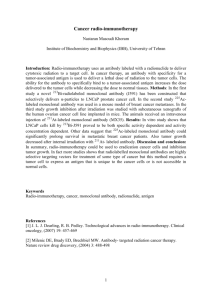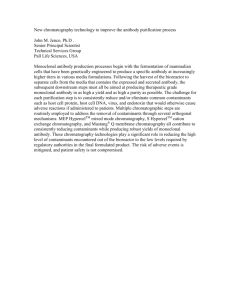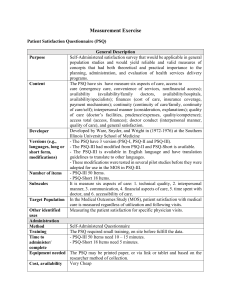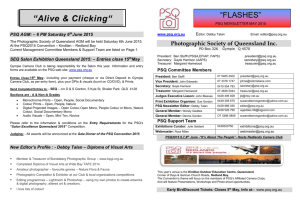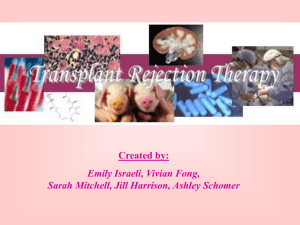Title: Induction Of Tolerance To Composite Tissue Allografts In The
advertisement
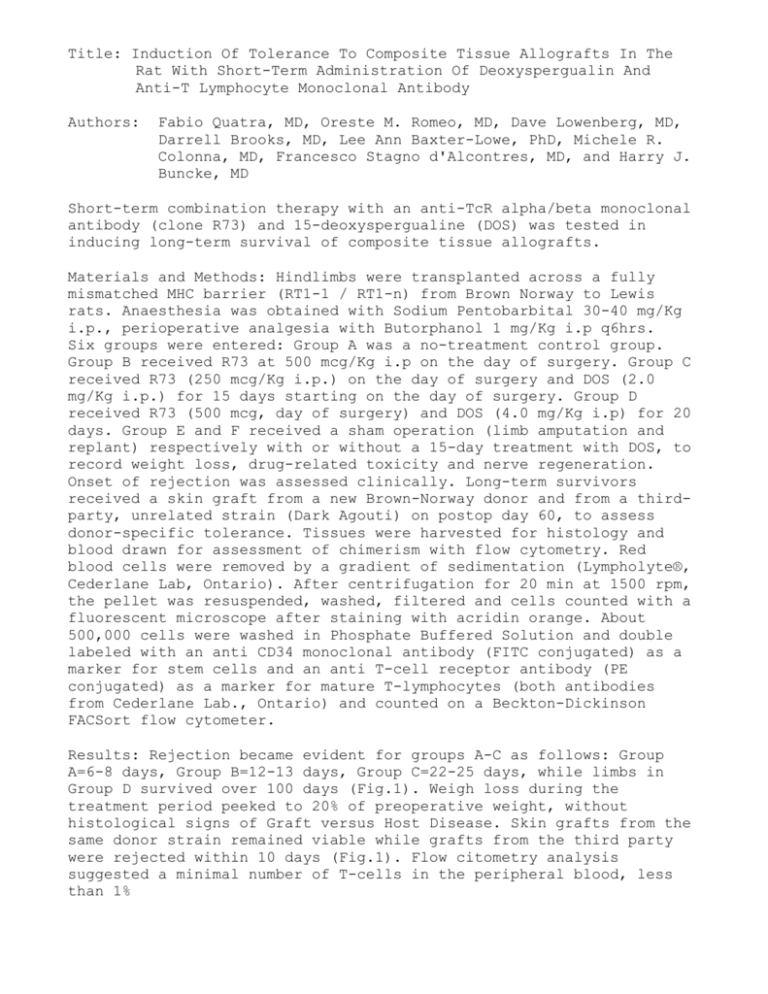
Title: Induction Of Tolerance To Composite Tissue Allografts In The Rat With Short-Term Administration Of Deoxyspergualin And Anti-T Lymphocyte Monoclonal Antibody Authors: Fabio Quatra, MD, Oreste M. Romeo, MD, Dave Lowenberg, MD, Darrell Brooks, MD, Lee Ann Baxter-Lowe, PhD, Michele R. Colonna, MD, Francesco Stagno d'Alcontres, MD, and Harry J. Buncke, MD Short-term combination therapy with an anti-TcR alpha/beta monoclonal antibody (clone R73) and 15-deoxyspergualine (DOS) was tested in inducing long-term survival of composite tissue allografts. Materials and Methods: Hindlimbs were transplanted across a fully mismatched MHC barrier (RT1-1 / RT1-n) from Brown Norway to Lewis rats. Anaesthesia was obtained with Sodium Pentobarbital 30-40 mg/Kg i.p., perioperative analgesia with Butorphanol 1 mg/Kg i.p q6hrs. Six groups were entered: Group A was a no-treatment control group. Group B received R73 at 500 mcg/Kg i.p on the day of surgery. Group C received R73 (250 mcg/Kg i.p.) on the day of surgery and DOS (2.0 mg/Kg i.p.) for 15 days starting on the day of surgery. Group D received R73 (500 mcg, day of surgery) and DOS (4.0 mg/Kg i.p) for 20 days. Group E and F received a sham operation (limb amputation and replant) respectively with or without a 15-day treatment with DOS, to record weight loss, drug-related toxicity and nerve regeneration. Onset of rejection was assessed clinically. Long-term survivors received a skin graft from a new Brown-Norway donor and from a thirdparty, unrelated strain (Dark Agouti) on postop day 60, to assess donor-specific tolerance. Tissues were harvested for histology and blood drawn for assessment of chimerism with flow cytometry. Red blood cells were removed by a gradient of sedimentation (Lympholyte®, Cederlane Lab, Ontario). After centrifugation for 20 min at 1500 rpm, the pellet was resuspended, washed, filtered and cells counted with a fluorescent microscope after staining with acridin orange. About 500,000 cells were washed in Phosphate Buffered Solution and double labeled with an anti CD34 monoclonal antibody (FITC conjugated) as a marker for stem cells and an anti T-cell receptor antibody (PE conjugated) as a marker for mature T-lymphocytes (both antibodies from Cederlane Lab., Ontario) and counted on a Beckton-Dickinson FACSort flow cytometer. Results: Rejection became evident for groups A-C as follows: Group A=6-8 days, Group B=12-13 days, Group C=22-25 days, while limbs in Group D survived over 100 days (Fig.1). Weigh loss during the treatment period peeked to 20% of preoperative weight, without histological signs of Graft versus Host Disease. Skin grafts from the same donor strain remained viable while grafts from the third party were rejected within 10 days (Fig.1). Flow citometry analysis suggested a minimal number of T-cells in the peripheral blood, less than 1% Conclusions: Combination therapy with R73/DOG showed to reliably prevent rejection in all the animals during the treatment period although a significant weight loss was observed. Treatment extended to 20 days was able to prolong survival well beyond DOS withdrawal, up to the 100-day scheduled endpoint, with persistent donor-specific tolerance. Fig.1: A limb without clinical signs of rejection at Post-Operative day 72. Fig. 2: Flow cytometry analysis of peripheral blood from rat #27 showing minimal amount of donor-derived cells (upper and lower right quadrants). References 1. Kann, B.R., Furnas, D.W., and Hewitt, C.W. Past, present, and future research in the field of composite tissue allotransplantation. Microsurgery 20: 393-9, 2000. 2. Thomas JM, Hubbard WJ, Sooudi SK, Thomas FT. STEALTH matters: a novel paradigm of durable primate allograft tolerance. Immunol. Rev. 183: 223-33, 2001.

